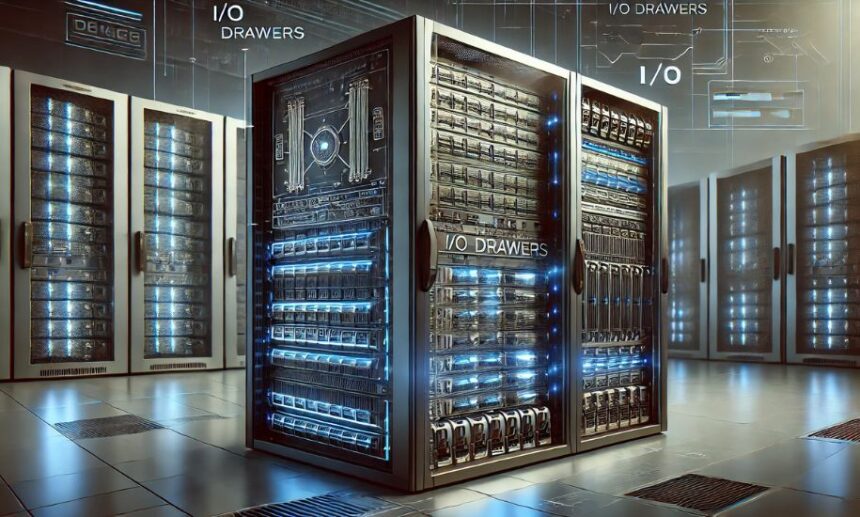At Market Blick, we strive to bring clarity to complex technical concepts, making them accessible and understandable. Today, we delve into a critical component in the realm of computing and data processing—the “i/o drawer.”
An “i/o drawer” plays an essential role in ensuring efficient input and output operations within computing systems. Whether in data centers or advanced computational setups, the “i/o drawer” serves as a backbone for handling critical tasks. In this article, we will explore what an “i/o drawer” is, its architecture, functionality, and its significance in modern systems.
What Is an “i/o Drawer”?
An “i/o drawer” is a specialized hardware component or enclosure designed to manage and facilitate input/output (I/O) operations in high-performance computing systems. It is often found in enterprise-grade servers, storage systems, and supercomputers. The primary function of an “i/o drawer” is to expand and optimize the system’s capability to connect with various peripherals, devices, and storage units efficiently.
At its core, an “i/o drawer” acts as an intermediary that bridges processors with external devices. This component is vital in managing data flow, ensuring smooth communication, and reducing potential bottlenecks.
Key Features of an “i/o Drawer”
1. Modular Design
Most “i/o drawers” come with a modular architecture, allowing users to customize or expand their systems according to specific needs. This flexibility makes them a popular choice in scalable environments such as data centers.
2. High Bandwidth Connectivity
“i/o drawers” are equipped with advanced connectivity options, such as PCIe slots, Ethernet ports, and fiber channel interfaces. These ensure high-speed data transfer between the central processing unit (CPU) and peripheral devices.
3. Hot-Swappable Components
Many “i/o drawers” support hot-swappable modules, enabling users to replace or upgrade components without shutting down the entire system. This feature minimizes downtime and improves system availability.
4. Enhanced Redundancy
To ensure reliability, “i/o drawers” often incorporate redundant power supplies and cooling mechanisms, safeguarding against failures.
How Does an “i/o Drawer” Work?
An “i/o drawer” operates as a dedicated hub that connects processing units with external I/O devices. Here’s a step-by-step overview of its functioning:
- Connection to the Processor The “i/o drawer” is linked to the processor or main system through high-speed interconnects, such as PCIe lanes or other proprietary technologies.
- Device Integration Peripheral devices like storage drives, network cards, or GPUs are installed within the “i/o drawer.”
- Data Routing The “i/o drawer” manages data traffic, ensuring efficient communication between the processor and external devices.
- Resource Optimization By offloading certain I/O tasks to the “i/o drawer,” the main processor is freed up for computational tasks, improving overall system performance.
Applications of “i/o Drawers”
1. Data Centers
In data centers, “i/o drawers” are indispensable for handling massive amounts of data and ensuring smooth operations. They enable the integration of multiple storage and network devices, critical for cloud computing and big data analytics.
2. High-Performance Computing (HPC)
Supercomputers rely on “i/o drawers” to manage extensive I/O workloads, supporting applications in scientific research, simulations, and machine learning.
3. Enterprise Servers
Enterprise servers use “i/o drawers” to enhance connectivity and scalability, accommodating the growing demands of businesses and industries.
Benefits of Using an “i/o Drawer”
1. Improved System Performance
By offloading I/O tasks, “i/o drawers” allow processors to focus on computation, resulting in faster and more efficient performance.
2. Scalability
The modular nature of “i/o drawers” makes them ideal for systems that need to scale as requirements grow.
3. Reduced Downtime
Features like hot-swappable components ensure that maintenance or upgrades can be performed without disrupting operations.
4. Cost Efficiency
With enhanced resource management, businesses can optimize their infrastructure, reducing operational costs over time.
Challenges Associated with “i/o Drawers”
Despite their benefits, “i/o drawers” come with certain challenges, such as:
- Complexity: Setting up and managing an “i/o drawer” requires technical expertise.
- Cost: High-quality “i/o drawers” and associated components can be expensive.
- Compatibility: Ensuring compatibility with existing systems and devices may require additional effort.
Future Trends in “i/o Drawers”
The future of “i/o drawers” is promising, with advancements such as:
- Integration with AI and ML Systems: Modern “i/o drawers” are being designed to handle the specific needs of artificial intelligence and machine learning workloads.
- Higher Bandwidth Solutions: Emerging technologies, like PCIe 5.0 and beyond, promise even greater speeds and efficiency.
- Energy Efficiency: Innovations in power management are making “i/o drawers” more energy-efficient, aligning with green computing goals.
Conclusion
The “i/o drawer” is a cornerstone of modern computing, playing a vital role in optimizing system performance and scalability. At Market Blick, we recognize its significance in powering today’s advanced technological solutions. As technology continues to evolve, the “i/o drawer” will remain a key component in meeting the ever-growing demands of data-intensive applications.







